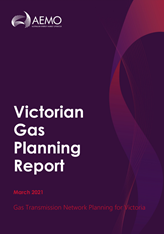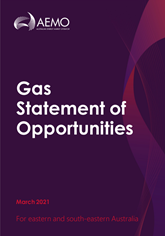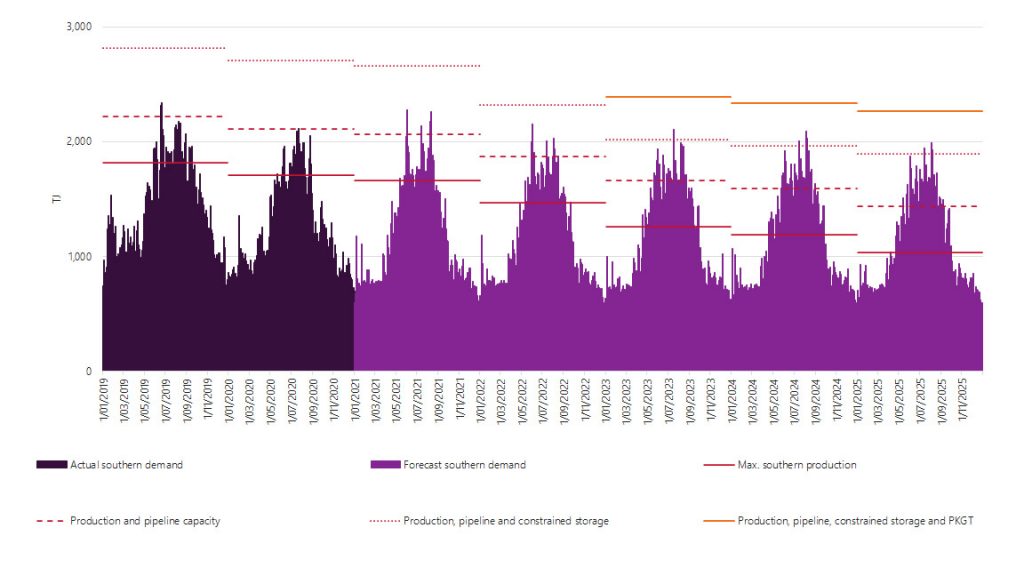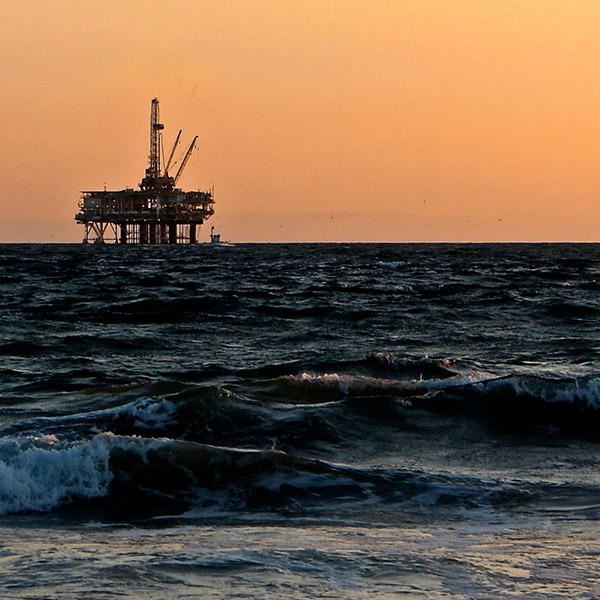Summary
Analysis of AEMO gas forecasts show there are no supply-demand issues out to 2035. There will be sufficient gas for the Winter peak in 2023 with existing (‘available’) supplies and the additional supply announced from Moomba into the Victorian Northern Interconnect by APA. Beyond 2023, the combination of demand-side measures such as switching existing households from gas to electric heat pumps and ceasing gas to new households places Victoria in a great position. Increased storage depth built by 2029, means Victoria’s gas supply is assured to 2035.
We also note that if the Port Kembla import terminal proceeds, along with the pipeline upgrade, then that provides additional supply and storage redundancy and cost pressure.
Victoria will benefit by moving away from gas.
Will there be a gas shortfall in Victoria?
This blog looks at the adequacy of gas supplies in Victoria. Our analysis draws heavily on the following documents:
- The Australian Energy Market Operator (AEMO) Gas Statement of Opportunities (GSOO); and
- The AEMO Victorian Gas Planning Report (VGPR) 2021
We also reference the announcement by APA in May 2021 of an upgrade to the MSP pipeline: Link: APA commences 25% Expansion of East Coast Grid, Enters into agreement with Origin Energy | APA Group


Based on our analysis we conclude that:
- There is no gas shortage in Victoria’s gas supply out until around 2029, assuming the APA pipeline upgrade goes ahead as announced.
- There is sufficient gas available to meet demand
- Winter peaks can be met
- Extra ‘Storage depth’ by 2029 then enables sufficient supply to 2035
- An increase in contracted inventory of LNG is required at Dandenong in order to provide more resilience to the supply system (e.g. supply disruption)
- Ceasing gas connection to new Victorian households would increase gas supply resilience (and from other reviews, lower total cost of energy to households, contribute to Victoria’s emissions reduction targets, mean less stranded assets in a carbon constrained future). There is a precedent for this, namely the recent approach adopted by the Australian Capital Territory (AEMO GSOO March 21).
- Port Kembla and the EPG (gas pipeline Vic to NSW) works are not required but would provide more gas into the supply market.
The overall east coast analysis shown below looks at the times when supply might be constrained. The solid orange line shows supply with Port Kembla import terminal , but it looks like APA’s MSP announced upgrade in May 2021 will be sufficient instead.
The threat of winter gas shortfalls prior to 2025

Figure 1 – Actual daily southern gas demand since January 2019, and forecast to 2025, showing seasonality, peakiness, southern production, and total system capacity available to meet southern demand using existing and committed projects (TJ) Source: AEMO GSOO March 21 page 6
We can also see that supply exceeds demand when we look at annual gas volumes for Victoria

Figure 2. Supply exceeds Demand – annual gas volumes – (Victoria). Source AEMO VGPR, March 2021, page 5
This analysis is supported by one of the key findings from the AEMO Victorian Gas Planning report 2021:
“The threat of winter gas supply shortfalls from winter 2024 that were forecast in the 2020 VGPR Update 1 are expected to be addressed through the commitment from Australian Industrial Energy (AIE) to proceed with the construction of the 500 terajoules per day (TJ/d) Port Kembla liquified natural gas (LNG) import terminal in New South Wales and Jemena’s commitment to modify the Eastern Gas Pipeline (EGP) to enable reverse flow from Port Kembla into the DTS.
AIE and Jemena have advised that these projects will be completed ahead of winter 2023. This will cover the identified supply gaps provided that all construction and commissioning is completed, and that shipping schedules provide reliable cargoes during the winter months.”
Source: AEMO VGPR, March 2021, page 3
IMPORTANT NOTE: What has happened since the AEMO VGPR and GSOO reports in March 2021, is that APA announced an upgrade of the Moomba to Sydney pipeline in May 2021. This pipeline connects to the Victorian Northern Interconnect pipeline at Culcairn. So this project alone ensures Victorian gas supply needs will be met without Port Kembla.
Another of the key conclusions of the VGPR is that Victoria’s Gas Supply can be extended out to 2035 without imports via sea-borne gas

This statement is supported by the following analysis:
1: We can increase the inventory in the Dandenong LNG storage. AEMO relies on the Dandenong LNG storage facility to provide fast response peak shaving gas supply to alleviate threats to system security. AEMO has identified this low Dandenong LNG inventory as a threat to system security and is seeking a market response. Source: AEMO VGPR, March 2021, page 4
2. An additional supply has been announced from Moomba into the Victorian Northern Interconnect by APA. The announcement by APA in May 2021, after the AEMO Reports in March 2021, is for an upgrade to the MSP pipeline: Link: APA commences 25% Expansion of East Coast Grid, Enters into agreement with Origin Energy | APA Group
3. An extra Storage facility by 2029 enables sufficient supply to 2035.
Victoria’s Gas Supply can be met without other supply upgrades beyond 2035 by ceasing new residential gas
By ceasing new residential connections (and switching away from gas on existing housing), demand can be reduced progressively over the next 15 years.
More modelling is required to confirm how many additional years are satisfied beyond 2035 by ceasing gas to new residences. i.e. with 1) extra storage, and 2) moving residential off gas (which shaves winter peaks, enhances storage volume, reduces total gas demand).
The impact of ceasing new residential connections is shown below:
 Figure 3: Ceasing new residential gas connections – ‘’similar to the recent approach adopted by the Australian Capital Territory’’.
Figure 3: Ceasing new residential gas connections – ‘’similar to the recent approach adopted by the Australian Capital Territory’’.
Source: AEMO GSOO March 21 page 63
Conclusions
- There will be sufficient gas for the Winter peak in 2023 with existing (‘available’) supplies and the additional supply announced from Moomba into the Victorian Northern Interconnect (VNI).
- Beyond 2023, the combination of demand-side measures such as switching existing households from gas to electric heat pumps and ceasing gas to new households places Victoria in a great position. Increased storage depth built by 2029, means Victoria’s gas supply is assured to 2035.
- With increased storage depth by year 2029, there are no supply-demand issues for Victoria as far as AEMO forecasts out to 2035.
- We also note that if the Port Kembla import terminal proceeds, along with the pipeline upgrade, then that provides additional supply redundancy.
- By ceasing gas to new households (and switching existing households from gas to electric heat pumps) over the next 15 years, resilience will be improved, and supply- demand dates extended past 2035.
Consider reviewing the Energy Transition Group’s submission to Victoria’s Gas Substitution Roadmap – this discussion paper advocates for a ‘no regrets’ approach emphasising demand reduction through energy efficiency and electrification rather than unproven technologies such as carbon capture and storage or building any domestic hydrogen distribution pipeline network.

